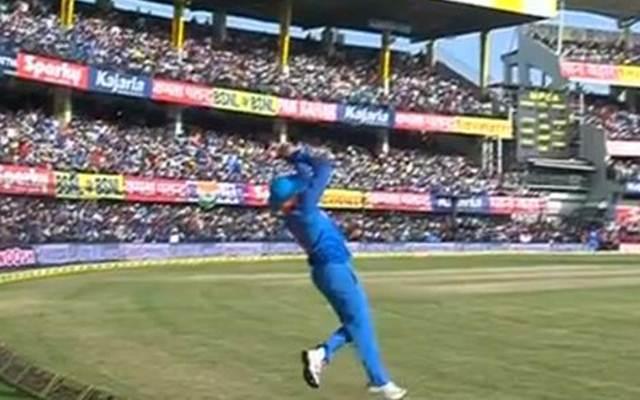New ICC rule for boundary catches could create a lot of confusion
It basically states that the first point of contact with the ball should be inside the ground for the catch to be deemed legal.
View : 23.3K
2 Min Read


The International Cricket Council (ICC) introduced a number of changes to its playing conditions effective in all the series starting September 28. The most important change among those included are the restrictions on the dimensions of the bat, especially its edges. Also, the other changes were in the Decision Review System (DRS), the introduction of player send-offs for misconduct. However, there was one more significant modification in the rule regarding the catches taken at the boundary.
The rules have been implemented as proposed and announced by Marylebone Cricket Club (MCC). But a few have miffed the former cricketers and the players. One of them is the fake fielding law over which Sanjay Manjrekar wrote a letter to ICC to reconsider. The other one is associated with the catches taken at the boundary. It basically states that the first point of contact with the ball should be inside the ground for the catch to be deemed legal.
MCC’s 19.5 Law: Fielder grounded beyond the boundary –
19.5.1 A fielder is grounded beyond the boundary if some part of his/her person is in contact with any of the following:
– the boundary or any part of an object used to mark the boundary;
– the ground beyond the boundary;
– any object that is in contact with the ground beyond the boundary;
– another fielder who is grounded beyond the boundary, if the umpire considers that it was the intention of either fielder that the contact should assist in the fielding of the ball.
19.5.2 A fielder who is not in contact with the ground is considered to be grounded beyond the boundary if his/her final contact with the ground, before his/her first contact with the ball after it has been delivered by the bowler, was not entirely within the boundary.
Here is an example:
Suppose a fielder catches the ball inside the boundary. However, he/she realises that the momentum might take him/her beyond the boundary ropes. Hence, the fielder throws the ball up in the air inside the field of play.
Then he/she again catches the ball when in mid-air and then finishes inside the boundary ropes. The batter will be given out in such a scenario.
Watch this video for instance:
Download Our App